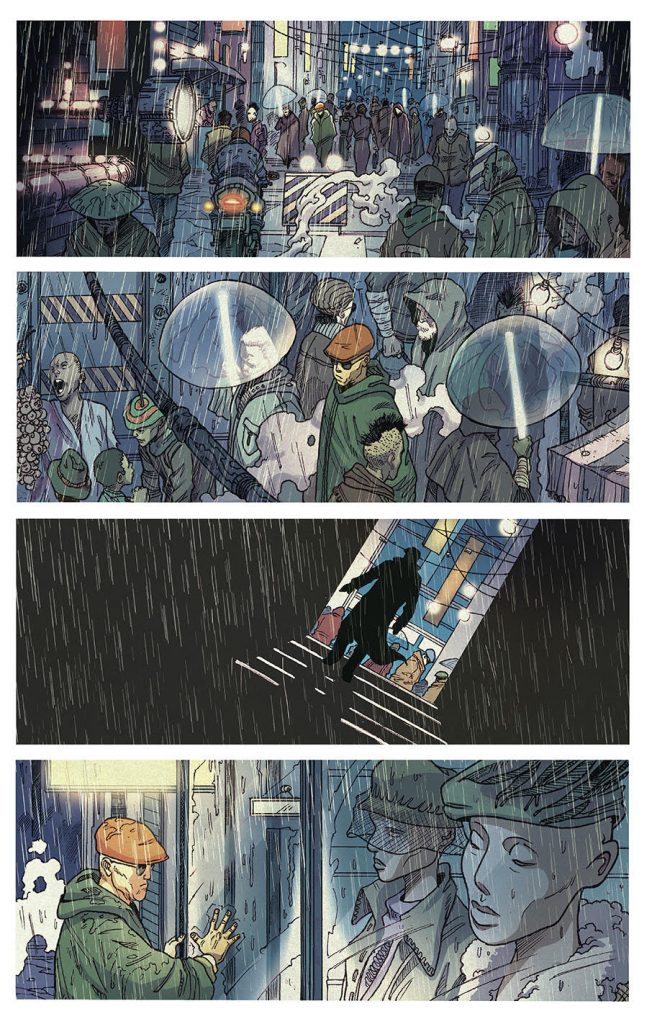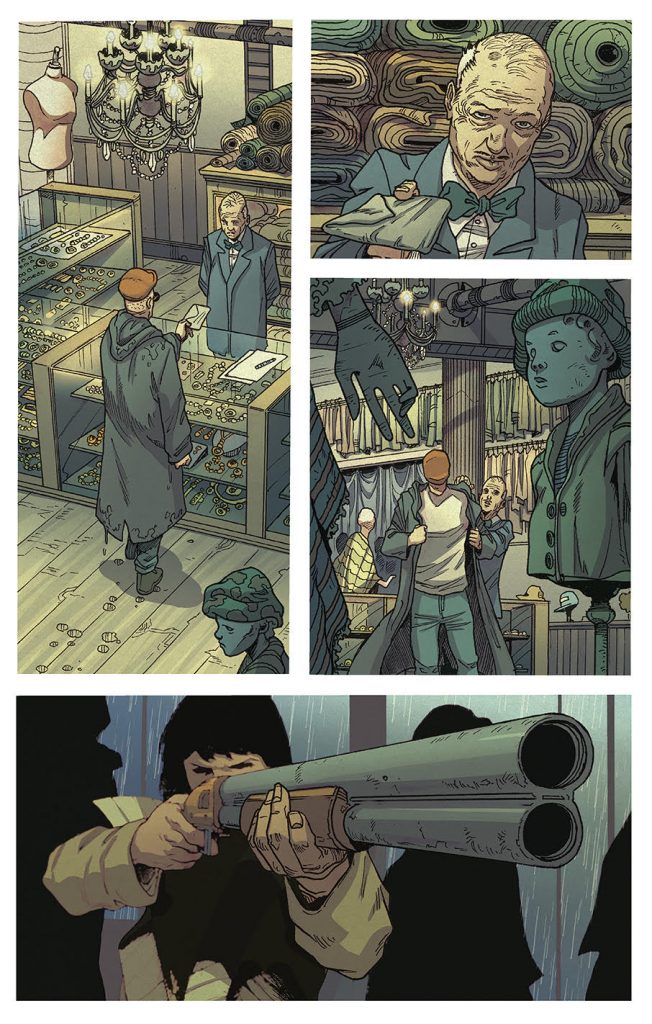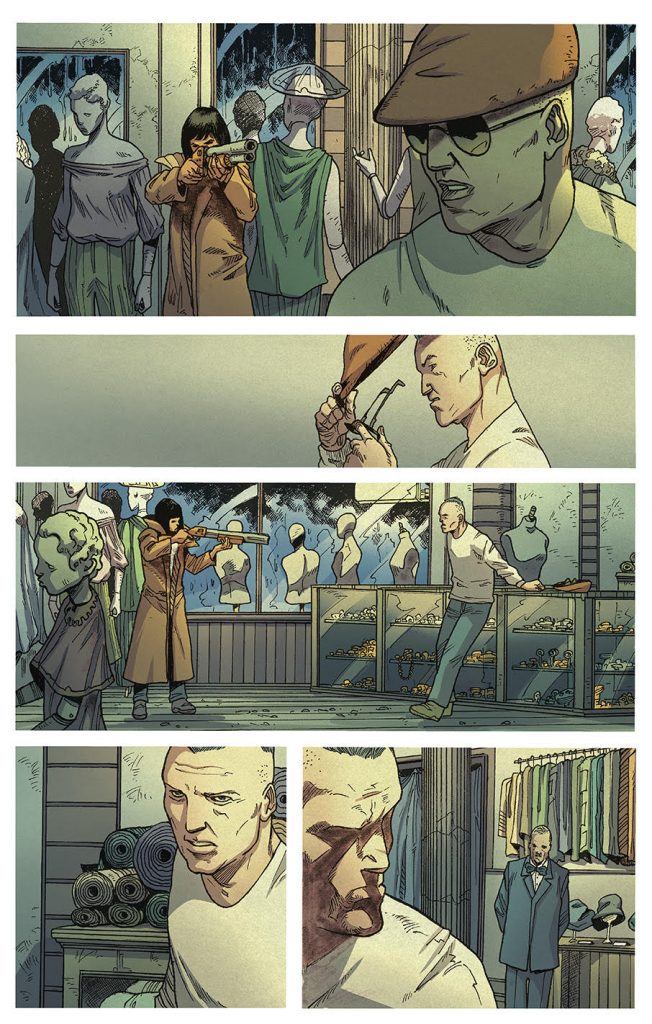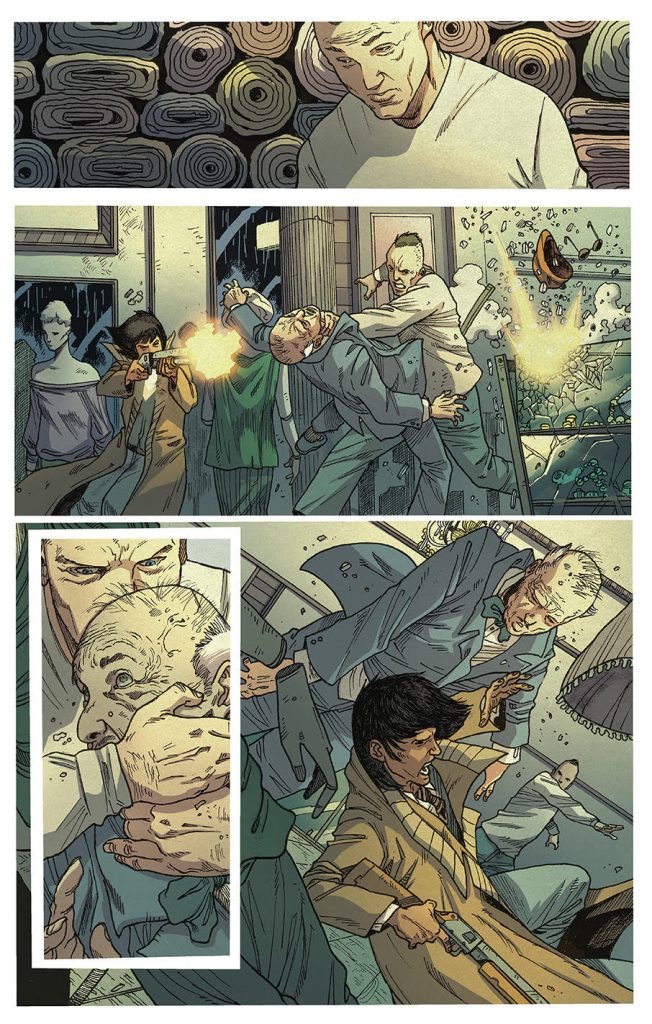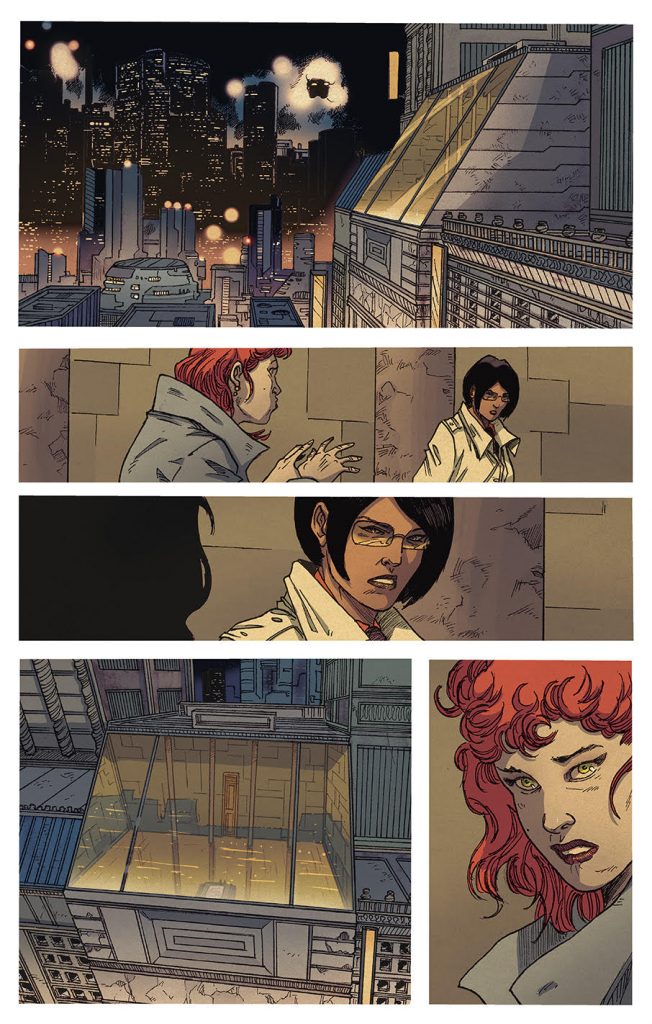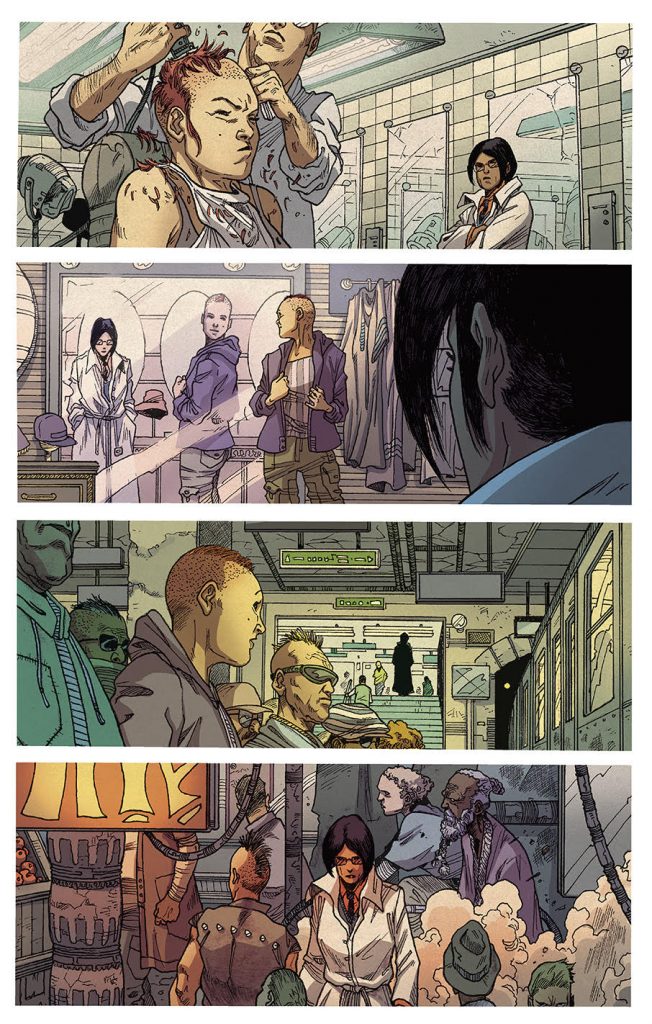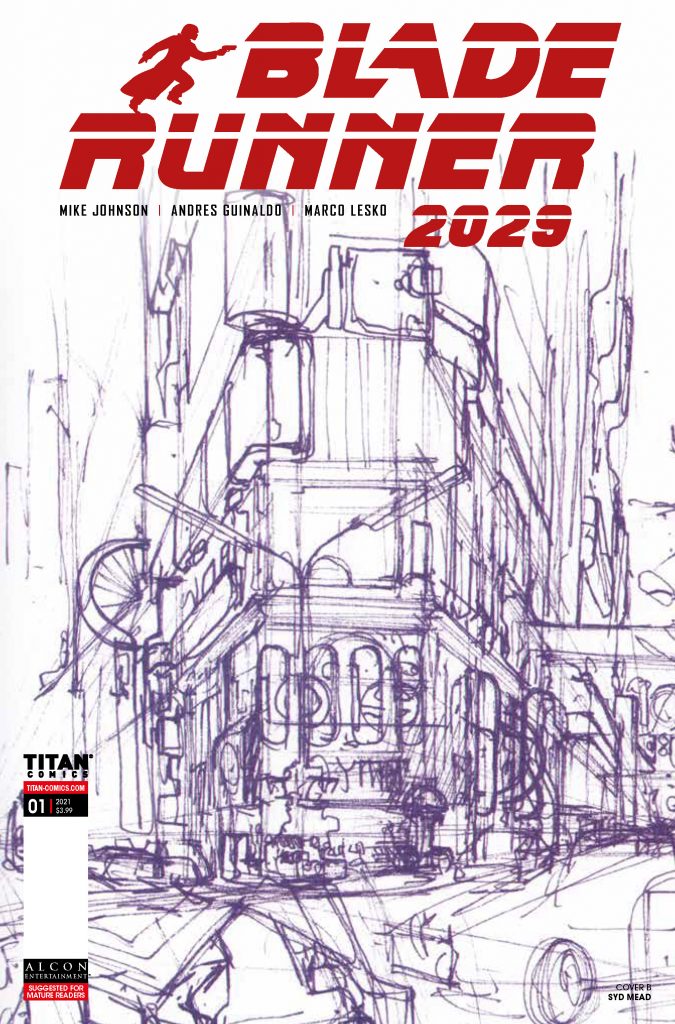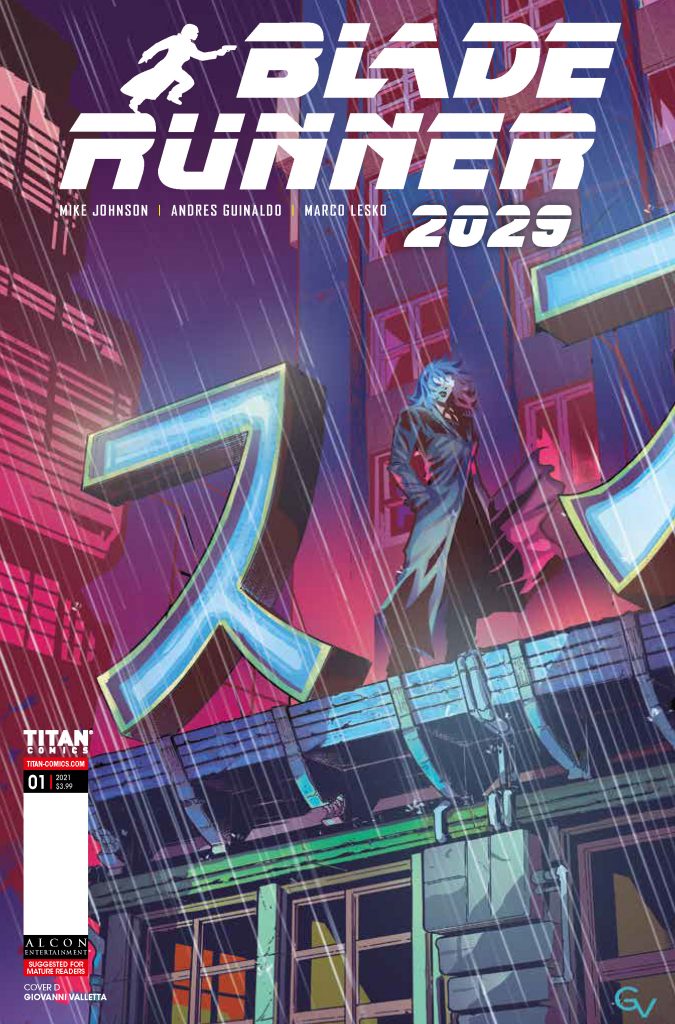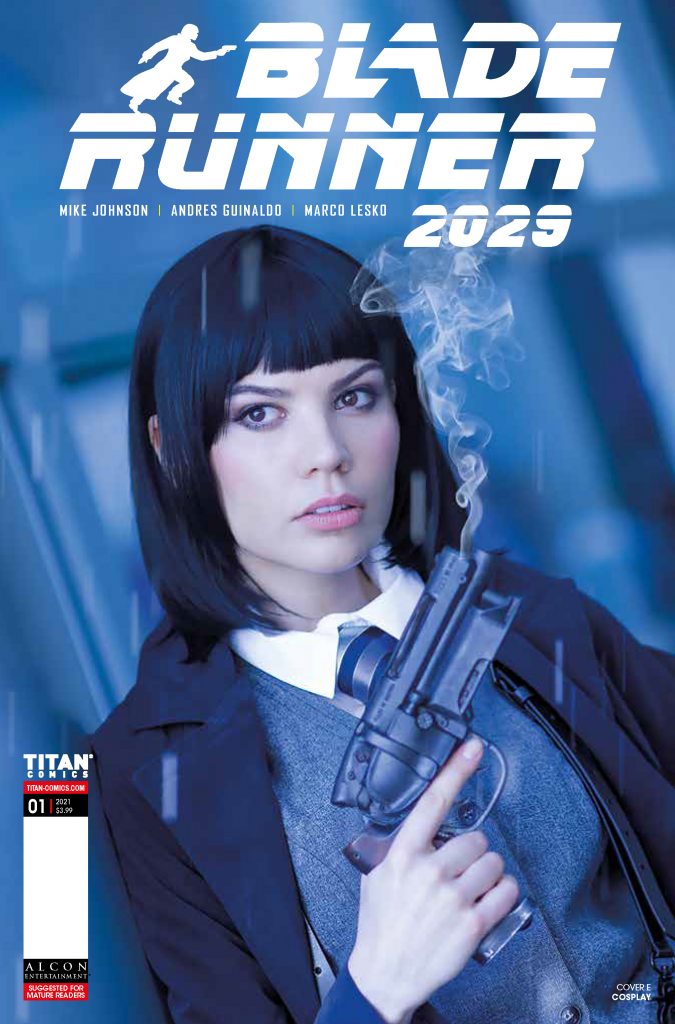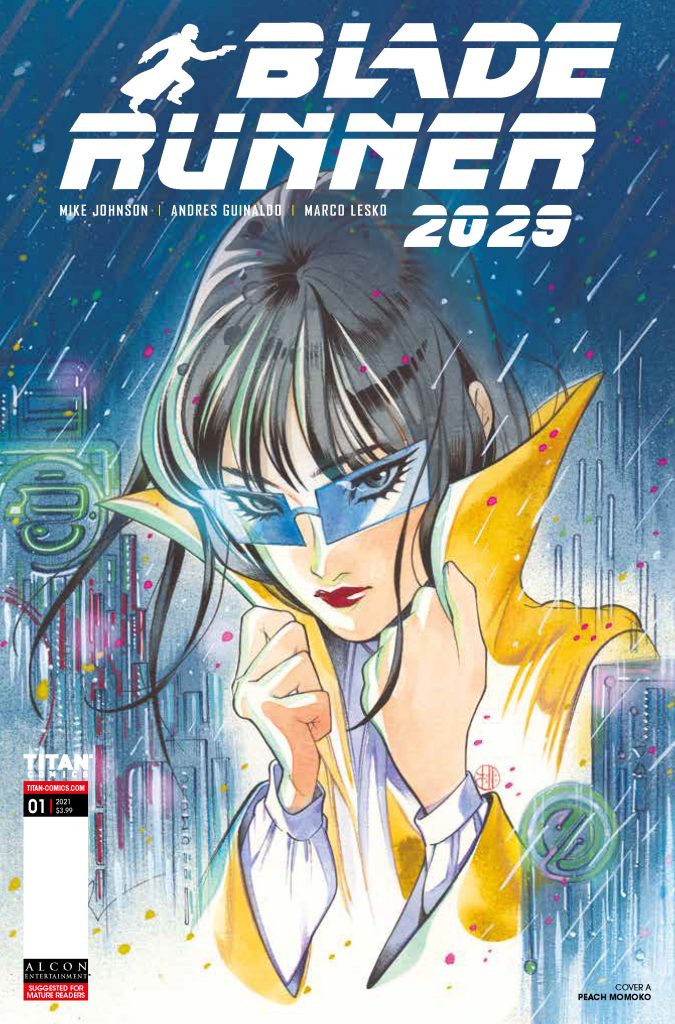
- Blade Runner 2029
- Titan Comics
- Written by Mike Johnson
- Art by Andres Guinaldo
- Colors by Marco Lesko
- Letters by Jim Campbell
- Edited by David Leach
- Creative Consultants
- Michael Green
- K. Perkins
- Mello Brown
- Available in January, 2021
Aahna “Ash” Ashina was one of the best Blade Runners to ever claim the title until she had a crisis of faith. She’s still hunting fugitive Replicants, but her goals have changed. Ash has no qualms putting down the Replicants who’ve crossed the line, but for the ones who are just trying to make lives for themselves, who simply want to live free, she represents much more than a bullet to the brain stem. If you’re a Replicant, living on Earth with nowhere else to go, Ash could be your best chance.
I was 13 years old when the original Blade Runner hit the big screen. No, don’t do the math. I’m old. I remember that people weren’t quite sure what to make of this new vision in science fiction and to be honest my young brain wasn’t really sure either. I just knew that it had Harison “I shot first” Ford in it, so it had to be great. Inspired by Do Androids Dream of Electric Sheep by Phillip K. Dick it’s become one of the early entries in what’s known now as cyberpunk (I here there there’s a new videogame out there the kids are playing…). Decades have scrolled by, and the singular visions of Ridley Scott is still influencing the world of speculative entertainment in all its forms.
Take comic books, for instance. Hot on the heels of a very successful opening story arc in Blade Runner 2029 (collected trades available now for volumes 1 & 2), Titan Comics is following up and continuing to expand on a universe that was ahead of its time. No longer able to ignore the countless shades of gray in her world, Ash can’t just point and shoot anymore and just like the Replicants, readers should be counting their lucky stars.
Mike Johnson is broadening our horizons, changing how we see the world of Blade Runner and bringing us ever closer to the “moments in time” alluded to in Roy Batty’s soliloquy. Far from the shining future promised by Gene Rodenberry, this is a dangerous, dirty, callous world and Johnson is filling it with possibilities both good and bad. One pitfall he’s managed to avoid is in the Replicants themselves. It would be easy to portray all of them as either villains or saints, and Johnson is making sure that they run the full gamut of more human than human potential. That was one of the things that might have confused audiences in the original movie, the fact that there weren’t very many clear cut “bad guys” for gunslinger Harrison Ford to take out. Nowadays, audiences appreciate more nuanced villains, and if a writer can pin a little infamy on an evil corporate entity that’s even better!
Seeing as how the Blade Runner (1982) movie is remembered to this day for its outstanding & ground breaking for its time visuals, Blade Runner 2029 has a lot to live up to. With a couple low profile credits no one’s ever heard of (Justice League Dark, Captain America) on his resume’, artist Andres Guinaldo has a lot to live up to. If I’m being conservative in my opinion, I’d say this is a guy to look out for. Just like Ridley Scott’s vision of the future, Guinaldo brings a perpetually soggy, dingy world to the page. And as in any really good dystopian hell hole, that world is populated by hordes of downtrodden folk just trying to keep their heads above water as they trudge from point ‘A’ to point ‘B’.
On a second read through, I took my time to appreciate the work done in the panels and was really impressed with the level of detail in the varied settings. I think part of that success is due to the work of Marco Lesko in coloring the book. The exteriors, eternally plagued by acid rain, are suitably dingy. Interiors are illuminated with artificial lighting ranging from the washed out look of utilitarian florescent tubes, to the warm golden tones of the disgustingly wealthy. Taken with Guinaldo’s illustrations, Lesko’s efforts go a long way toward emphasizing everything that’s great.
Finally, I have to point out the great job of lettering done by Jim Campbell. I may lose readers over this, but I never really cared for Ridley Scott’s director’s cut of Blade Runner (Mr Scott, if you’re reading this, I’m sorry). The biggest factor to the disconnect I felt with the later release was its omission of Deckard’s voiceover, delivered by the perpetually growly Harrison Ford to noir-ish perfection. In the pages of Blade Runner 2029, Campbell manages to bring an essential touch to the text boxes, Ash’s own voiceover narration, by giving them a subtly handwritten look. The font isn’t so stylized as to be difficult to read (I’ve seen way too much of that in comics lately), but it’s just enough to remind us that this isn’t some impersonal third-person entity talking.
At a time when revivals are all the rage, it’s easy to lose track of the ones that are just slapping together a retread and the ones that go above and beyond to do it right. Credit where it’s due, Titan Comics deserves some kudos just for daring to take on a cyberpunk tent pole like Blade Runner 2029, knowing that critical eyes were going to be all over it. That everyone involved has gone to obvious effort to make sure that it stands on its own among creative giants earns my respect.
Final Score: 12/13
